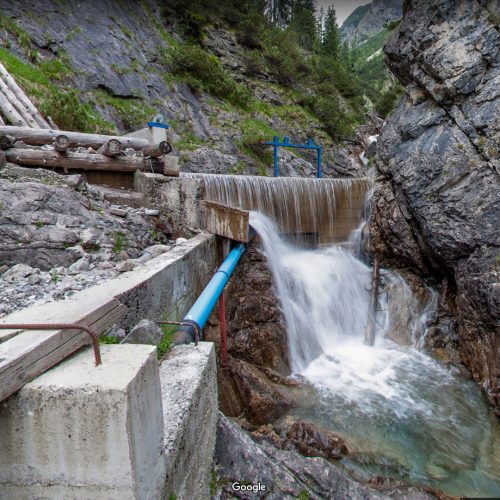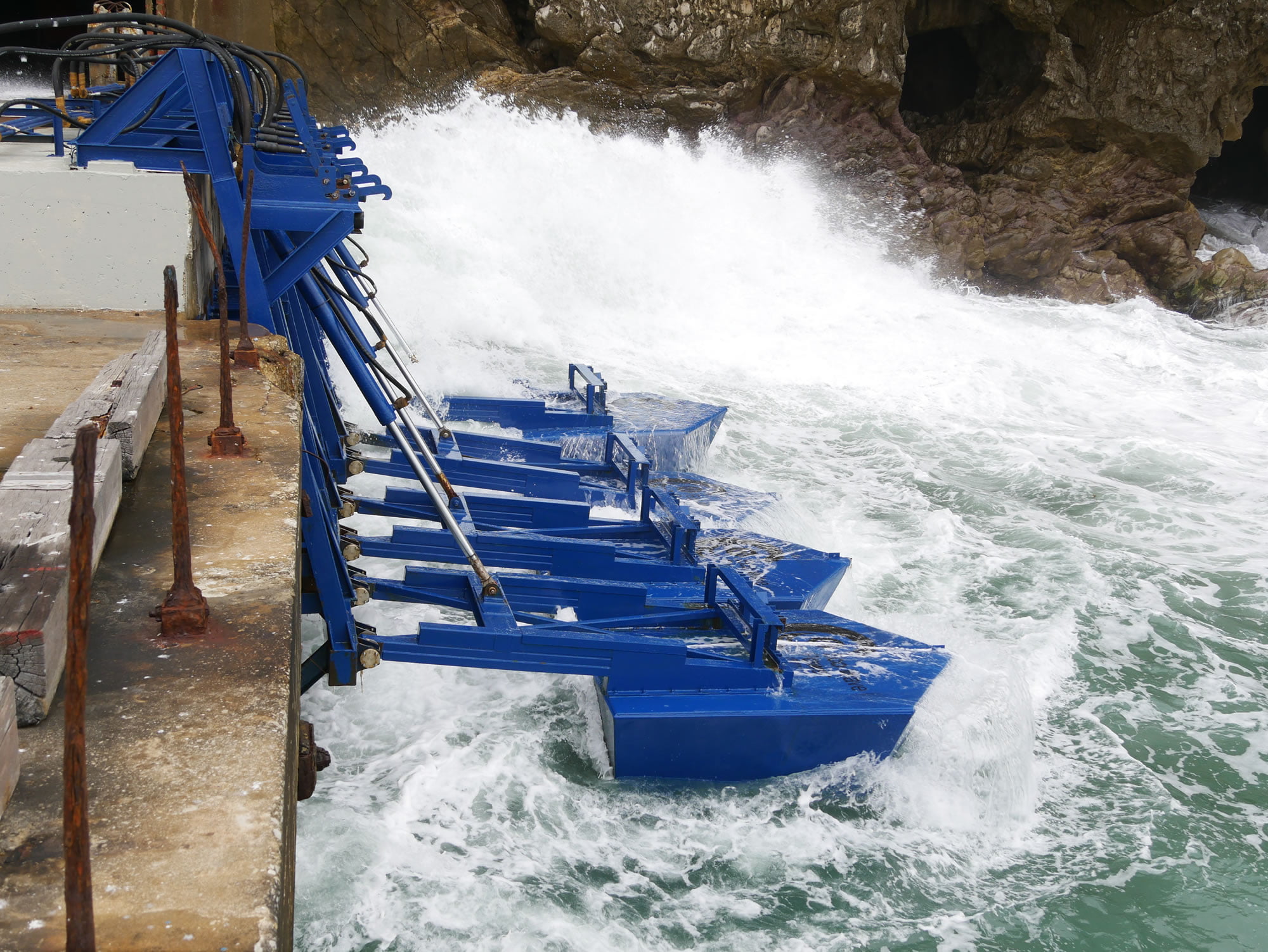THE RENEWABLE ENERGY RACE
With the uptake of renewable energy on the rise the race is on between the main UK Energy companies to meet demand. Understanding what constitutes renewable or green energy is important to enable informed decisions when choosing your next supplier.
What is Renewable Energy?
Renewable energy is that generated using resources that aren’t depleted when used, such as solar or wind power.
What is Green Energy?
The exact definition of Green Energy may depend on which dictionary you use.
Cambridge dictionary states that Green Energy is ‘Energy that can be produced in a way that protects the natural environment, for example by using wind, water or the sun’.
For comparison, the Collins dictionary states that ‘Green energy is power that comes from sources that do not harm the environment and are always available, such as wind and sunlight.
Natural Environment
Each of these definitions is open to very different interpretations when it comes to the natural environment.
Collins states that the power must come from ‘sources that do not harm the environment’, would mean that Solar, Wind, Hydro and Geo-Thermal were all included as Green Energy sources and suggests that all energy from these sources is ‘Green Energy’ regardless of the environmental impact of production.
Cambridge on the other hand states that it is energy ‘that can be produced in a way that protects the natural environment’ – What exactly this protection encompasses throws a cloud over green energy altogether.
RENEWABLE ENERGY SOURCES
Solar Energy
Solar Energy is, for commercial energy production, currently harnessed via one of two methods.
Concentrated Solar Power – (CSP)
This type of solar energy production system utilises large arrays of mirrors to focus the suns energy at a central point which has a carrier fluid flowing through it. The increased levels of heat from the mirror array causes the oil to heat up to around 400C, this, in turn, heats water with electricity generated via a steam turbine.
The viability of concentrated solar power plants normally requires them to be in desert areas with clear skies. This combined with the fact they are intense water moves this renewable energy source towards the grey rather than ‘Green Energy’ zone.
Photovoltaic Solar power – (PSP)
The capture and conversion of the sun’s energy via photovoltaic methods produce over 855.7 TWh of renewable energy annually.
Photovoltaic solar systems have been shown to have an ecological impact on land use as well as on soil, air, and water resources. The manufacturing process is also a water-intensive process that uses a large amount of silicon as well as heavy metals which are now used in the production of thin-film panels.
RENEWABLE ENERGY SOURCES
Wind Energy
Wind power produced over 1500 TWh of renewable energy in 2020 and there is currently 743GW of wind power capacity. That’s enough to power over 230 million 3kW kettles simultaneously.
The environmental impact assessment of wind turbines mainly focuses on their placement and the effects on both bird and bat populations. The Royal Society for the Protection of Birds (RSPB) currently supports both on and offshore projects providing there is an adequate assessment on placement to minimise any impact on bird populations.
The manufacture, transportation, and installation processes do have a carbon footprint, but this is compensated for via payback within the first year of operation. Payback differs to offset as it is calculated against equivalent energy production from conventional non-carbon-neutral power production methods. An offset would require the removal of an equivalent quantity of greenhouse gases, but wind power remains one of the greenest forms of renewable energy production.
RENEWABLE ENERGY SOURCES
Hydro Energy
The scenic reservoir partnered with an imposing concrete dam in a mountain landscape might be the initial image that comes to mind but there are a few different methods used for harnessing Hydro Electric power, each with its own ‘Green Renewable Energy’ credentials
Hydro Dam
Lake Mead is perhaps the most famous example which sits behind the Hoover Dam in Nevada, USA. It uses two impulse turbines to generate renewable energy which are not fully submerged but are powered by falling water from the reservoir via a channel.
Other reservoirs and dams also use an alternative system known as reaction turbines which are fully submerged. An example of this would be the Three Gorges Dam located in the Hubei province in China.

Three Gorges Dam – Hubei Province, China

Run Of The River – Rossgumpenalm, Holzgau, Austria
Run-of-the-river hydro systems
These types of hydroelectricity generation projects don’t utilise large water reservoirs but instead, have a continuous supply of moving water that generates renewable energy. An industrial-scale example of this would be Chief Joseph Dam in Washington. At first sight, this may appear to be of a Dam and reservoir type but it is classified as a run-of-the-river system.
A more classical example of a run-of-the-river hydro system would be this installation in the Tirol region of Austria which was installed to provide enough renewable energy to power a mountain café popular with hiking tourists known as Rossgumpenalm.
Tidal Hydroelectricity
The use of barrages captures tidal water at high tide to release at lower tides as a renewable energy source. The use of this type of hydropower is thought to have a significant impact on coastal ecosystems which has even led some governments not to approve any further installations.
Wave Powered Hydroelectricity
Various designs exist for the capture of wave energy a renewable energy source. Most recently an innovative project by Ecowavepower may result in the development of a 50MW wave energy array in Vietnam. Their technology uses a floater which when moved by waves causes a piston to compress hydraulic fluid which is then used to drive a hydraulic motor attached to a generator.

Ecowavepower – example of renewable energy from wave power
Hydro is it Green?
Although hydroelectricity is certainly a renewable energy source, current research suggests it may need to be moved further into the grey vs the green energy zone.
A study published by researchers at Washington State University in October 2016 demonstrated that reservoirs associated with dams produce increased levels of both methane and carbon dioxide.
The level of methane production appears to be associated with the biological activities within reservoirs which are affected by both levels of decaying vegetation and nutrient runoff.
A further study concluded that carbon dioxide emissions increase based on levels of soil erosion into reservoirs.
RENEWABLE
ENERGY
SOURCES
Geothermal Energy
Iceland is considered the world’s leading pioneer in the use of geothermal energy as a renewable energy source to provide both heating and electricity. Their geothermal power plants currently produce around 25% of the total electricity consumed.
There are two types of geothermal systems currently utilised. These are known as closed and open loops. The closed-loop system is the greener option which as its name suggests involves the use of a closed-loop of pipe which pumps fluid around an underground loop system to a heat exchanger.
Ground Source Heat pumps are a type of closed-loop system which uses the relatively stable heat held in the ground to both heat and cool.
The closed-loop geothermal systems in Iceland operate on a similar principle but on a larger and deeper scale harnessing volcanic geothermal energy rather than that just held in the ground.
Open-loop geothermal systems require adequate water flow to pass only once through a heat exchanger releasing higher levels of CO2 in the process. It’s estimated that Open Loop Geothermal systems produce around 38g of CO2 per kWh.
RENEWABLE ENERGY SOURCES
Biomass Energy
Biomass, although a renewable energy source and overall considered carbon-neutral, produces air pollution which firmly takes it off the Green Energy list.
Biomass as an energy source has been a popular option due to the relative ease by which existing coal-powered plants can be converted.
Fuel sources for Biomass power generation include Garbage, Wood, Crops, Alcohol fumes, and landfill gas.
Solid-based fuel sources are normally processed before burning to produce electricity. This process is known as torrefaction which involves heating the biomass to dry it out. The torrefaction process produces a hydrophobic black material which is then compressed into briquettes ready to burn.
Wood pellets are another popular renewable energy fuel source and are used in power stations such as Drax power station.
Recent UK government research has shown that although biomass power generation may be carbon neutral the level of greenhouse gas emissions per unit of electricity generated can in some cases be higher than the amount produced by burning fossil fuels like coal or gas.
Biomass can only be considered a renewable energy resource if, as part of the fuel production process, plants or trees are grown sustainably to offset carbon emissions and to provide a renewed fuel source.
RENEWABLE ENERGY SOURCES
Nuclear Energy
Nuclear Fission
Currently, Nuclear Fission isn’t considered a renewable energy resource as the Uranium used as a fuel source is mined from an ore.
If instead of mining from ore, it was extracted from seawater it could be considered a renewable energy resource but would still produce significant levels of nuclear waste with a half-life of millions of years which takes it firmly off the ‘Green Energy’ List.
Nuclear Fusion
Nuclear Fusion is currently considered one of the Greenest Renewable Energy sources due to there being no CO2 or harmful emissions created during the fusion process.
The main waste produced in the fusion process is helium an inert gas. Helium is also a required resource as part of the fusion process which would require it to be captured and recycled.
Nuclear Fusion – Is it Renewable Energy?
Although Nuclear Fusion is considered by many to be the holy grail of clean ‘renewable energy’ a report published in 2013 entitled ‘Nuclear fusion and the helium supply problem’ has thrown its renewability and sustainability into doubt. Currently, crustal helium is the only available form commercially available and will continue to be used until a sustainable method of air extraction can be developed and utilised. Even with air extraction techniques helium is lost through the atmosphere into interplanetary space. Therefore, it may be necessary to monitor and maintain current concentration levels for nuclear fusion to be classed as a renewable energy source or for an alternative to Helium to be used.
Nuclear Fusion – The Future
The development and construction of a Nuclear Fusion site would still have an environmental impact and carbon footprint, but this would be minimal, and any carbon footprint would be compensated for via payback or could be easily offset.
As part of its commitment towards renewable energy production, the UK government has developed a program that it hopes will produce a viable Nuclear Fusion power plant by 2040. The site for the plant and research facility has been narrowed down to five potential locations, with the final decision on the location expected to be announced at the end of 2022.
RENEWABLE ENERGY SOURCES
The Green Energy Spectrum
Basing each of the current renewable energy types on a sliding scale from green to grey would place wind and solar power would be at the greenest side of the spectrum with biomass planted firmly in the grey. The remaining renewable energy sources would fall somewhere in between based on their combined greenhouse gas emissions and overall environmental impact.
Nuclear Fusion can also be considered as potentially one of the greenest sources of energy, but its renewable energy status is currently unclear.
Greenwashing
Greenwashing is a practice used to make a company or organisation appear more environmentally friendly than they are, usually as a marketing practice intended to mislead customers.
The UK government announced in August 2021- that it would be tightening rules to stop Greenwashing of electricity tariffs.
Currently, tariffs offered by energy companies can be marketed as green regardless of source, providing they have purchased enough Renewable Energy Guarantees of Origin (REGO) certificates to offset any energy sourced from fossil fuels.
One issue with Renewable Energy, REGO certificates is that they are carbon neutral not carbon negative, this means that a supplier purchasing 1 REGO for 1 MWh of Fossil Fuel generation will still have contributed up to 900 kg of CO2 but still maintain 100% green status.
Going Green
The first step is choosing a supplier that is invested in renewable energy production, not one that’s involved in Greenwashing.
If you want to make sure you stay in the green vs the grey, speak to one of the Energy Team at Black Sheep Utilities who can advise you on renewable energy contracts as well as auxiliary systems such as solar installations to both keep you in the green and help save you money.



